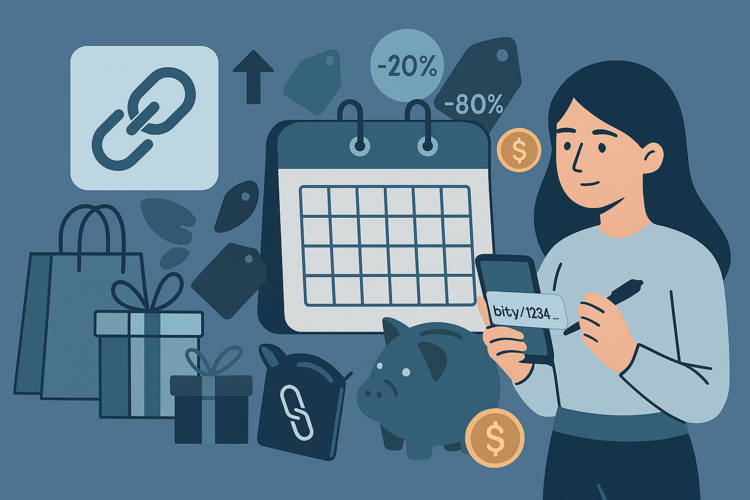How to make a person not just open an email, but do it with pleasure? Even the best-written email is worthless if it is not opened. And the subject line is the one line that decides the fate of your email campaign . Not the design, not the copywriting, not the discount, but just one line.
People read dozens of emails every day. To make sure yours doesn’t get lost among the “Up to 50% Off Today Only” emails, stop writing like everyone else. Here are 10 proven principles to help you create headlines that work.

1. Write as if you were writing to someone you know, not a brand.
Formal phrases like “Special offer for you” have long been immune. Formulations that sound like a living message are perceived better. For example: instead of “Last chance to buy” — “Haven’t you seen this yet?”
This works because it creates the effect of a personal letter, rather than a mass mailing. Especially if the letter actually contains something useful or new.
2. Provide specific value in the topic
The subject line of the email should promise a specific result or benefit. This could be a new feature, access to materials, a reminder about a bonus, etc.
Example: "Download the monthly content plan template."
The more clearly the benefit is formulated, the higher the chance of discovery. Don't describe what you did, tell us what the person will get.
3. Use numbers — they structure the topic
Numbers give a sense of order and specificity, they automatically attract the eye's attention in the flow of text.
Example: “5 ways to reduce advertising costs”, “3 new features you’ll love”. Formats like “X tips”, “X reasons”, “X ways” work consistently in any niche — from SaaS to online courses.
4. Provoke curiosity, but leave something unsaid
It's important for people to know what awaits them inside a letter. But it's not always necessary to reveal all the cards.
Example: “One change in the service that will save you time” — I want to open it and find out what it is.
But don't turn intrigue into clickbait. If a user opens the email and doesn't find what they're promised, it's the last email they'll open from you.
5. Treat the preheader as an extension of the topic
Many people ignore the preheader — and for good reason. It’s the second line a user sees after the subject line. And if the subject line is of interest, the preheader can cement that interest. It looks something like this:
Topic: "What changed after update 2.0?"
Preheader: "New design, better speed and 3 unexpected bonuses"
Topic + preheader = one semantic construct. They should complement, not repeat, each other.

6. Don’t use abstract or “empty” words
“Exclusive offer”, “Incredible novelty”, “Super promotion” — all this is meaningless. Such words have already lost credibility. Instead of “Special offer for you” — “15% discount for those who have not completed the purchase”.
Specifics are always better than value judgments. If you promise “something cool,” explain what exactly it is.
7. Test different topic formats, don’t rely on intuition
A/B testing of themes is a must. There is no single “right” formula. What worked last time may fail next time. It’s worth testing:
different styles (emotional/formal);
the presence of numbers;
length of the topic;
elements of urgency or personalization.
Even one replaced word can change the Open Rate from 12% to 22%.
8. Personalize not just the name, but also the context
True personalization is not just “Ivan, we have an offer.” It’s also about context: mentioning the product the subscriber uses; the region where they live; events that might interest them.
For example: instead of “New course news,” say “New lessons for those who have already completed the basic course.” This creates the feeling that the letter is really for him, and not for thousands of others.

9. Be careful with spam triggers
Topics with an excess of caps lock, exclamation marks, the words "free", "promotion", "urgent" may end up in spam.
Better than “FREE TODAY ONLY!!!” — “Free access until the end of the day.”
The algorithms of email services have become tougher in 2025. Sometimes one unsuccessful trigger can end up in the Spam folder, even if you were expecting it.
10. Write briefly — 5–9 words, no more than 60 characters
Subject lines that are too long are truncated in mobile email clients, and the user sees only half of the meaning. Within 5–9 words is the optimal length for conveying the message without losing meaning.
For example, “What’s new in this week’s product” reads well in Gmail, Outlook, and on the iPhone.
In conclusion
The subject line of an email is the gateway to communication. And the better it is set up, the more people will see what you have prepared. This is not a place for automatic formulations. This is a place for precise work with meaning, emotion, and context.
And it's also a space for experimentation. Don't be afraid to test. Don't be afraid to talk to people like people. After all, that's what they're waiting for—and that's what they're discovering.




